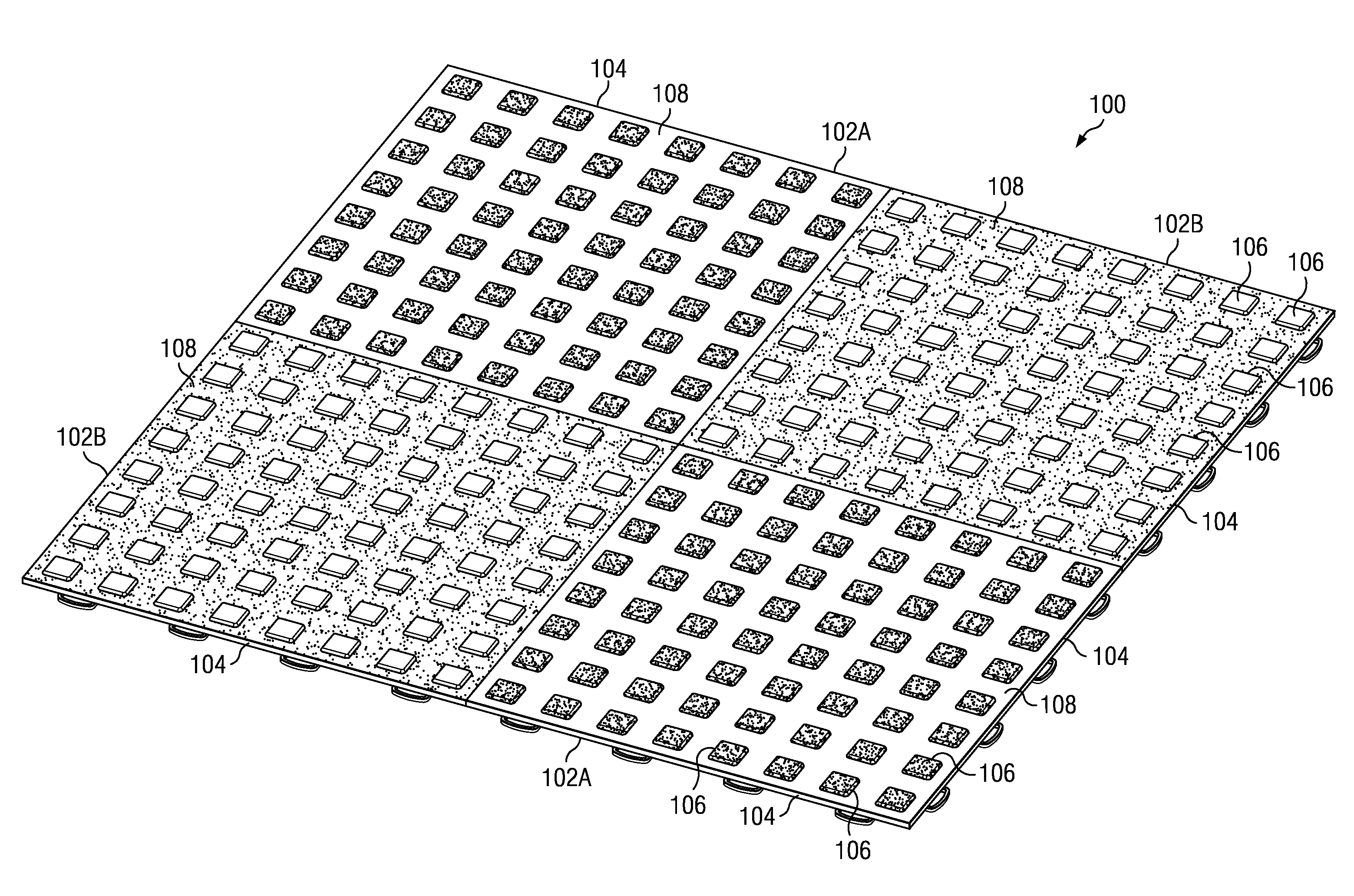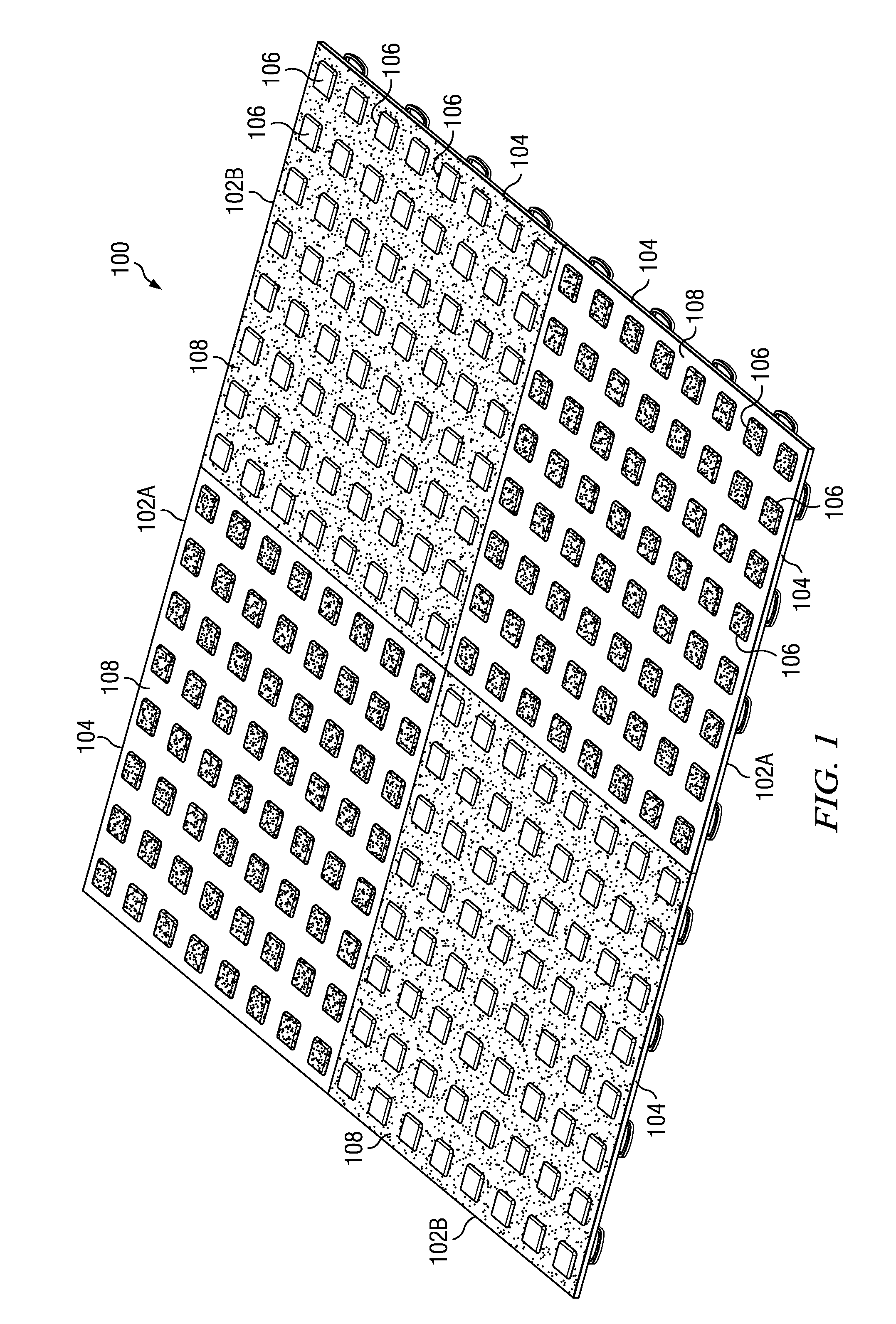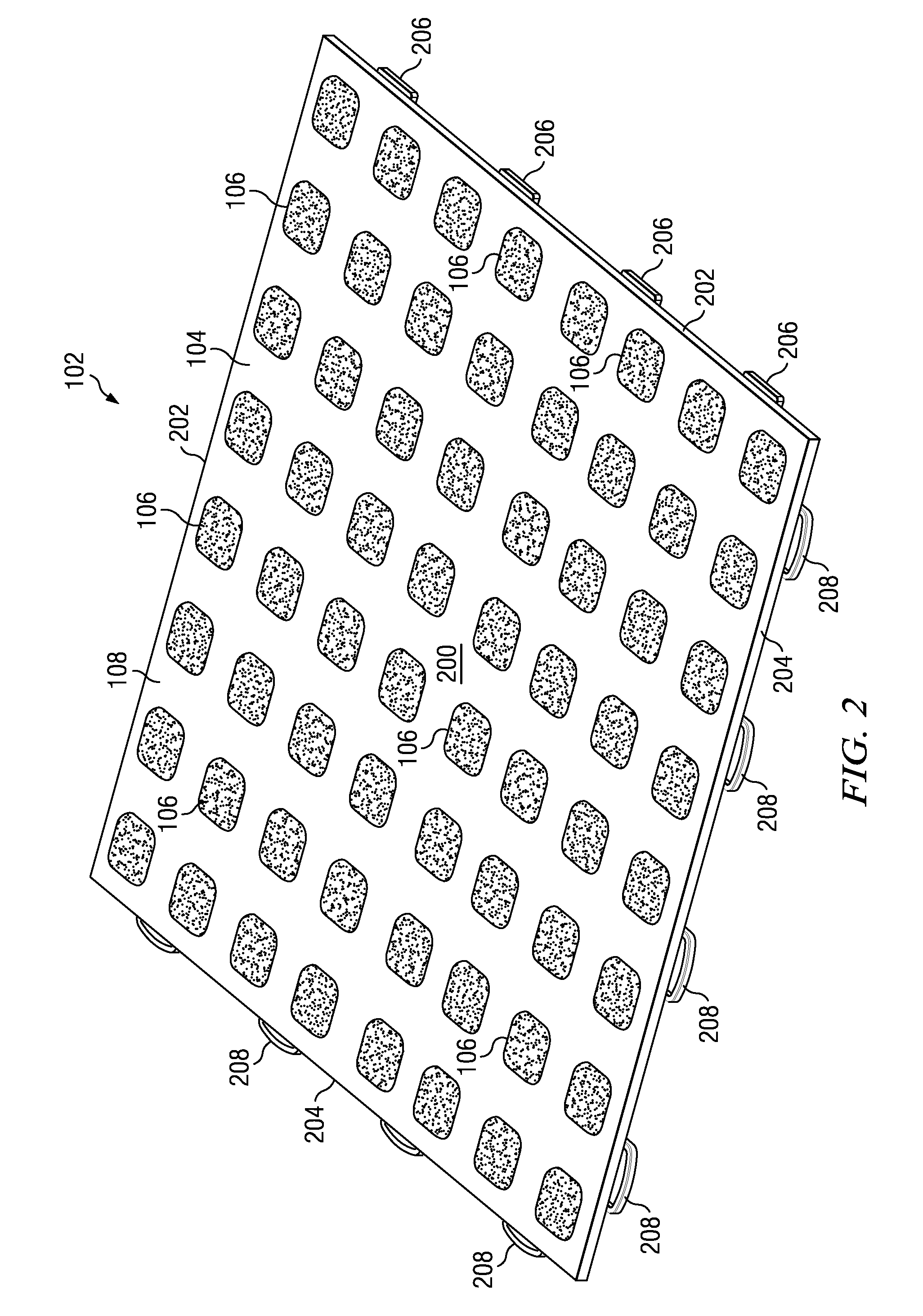Floor tile
a technology of floor tiles and injection molding, which is applied in the field of floor tiles, can solve the problems of increasing the cost of manufacturing the resultant tile, and the difficulty of manufacturing an injection molding plastic tile with two or more perceptible colors per tile, and achieves the effect of convenient, rapid and relatively inexpensive creation
- Summary
- Abstract
- Description
- Claims
- Application Information
AI Technical Summary
Benefits of technology
Problems solved by technology
Method used
Image
Examples
Embodiment Construction
[0038]Modular floor tiles according to the invention can be used to form a flooring surface, a representative portion 100 of which is shown in FIG. 1. In this illustrated embodiment, the flooring surface 100 is made up of tiles 102, including first floor tiles 102A and second floor tiles 102B, which are identical except as to color. The floor tiles 102A each have a body 104 injection-molded from a first polymer compound, preferably comprising a polymer which is relatively rigid when solidified and which can be selected from the group consisting of polyolefins including polypropylene and high molecular weight polyethylene, rigid thermoplastic polyurethane (TPU), acrylonitrile butadiene styrene (ABS) and rigid polyvinyl chloride (PVC). The first polymer compound may further include a filler such as talc to aid in achieving surface flatness, and a pigment. Floor tiles 102B have bodies 104 which preferably are made of a polymer compound identical to that forming bodies 104 of tiles 102A...
PUM
| Property | Measurement | Unit |
|---|---|---|
| length | aaaaa | aaaaa |
| length | aaaaa | aaaaa |
| length | aaaaa | aaaaa |
Abstract
Description
Claims
Application Information
 Login to View More
Login to View More - R&D
- Intellectual Property
- Life Sciences
- Materials
- Tech Scout
- Unparalleled Data Quality
- Higher Quality Content
- 60% Fewer Hallucinations
Browse by: Latest US Patents, China's latest patents, Technical Efficacy Thesaurus, Application Domain, Technology Topic, Popular Technical Reports.
© 2025 PatSnap. All rights reserved.Legal|Privacy policy|Modern Slavery Act Transparency Statement|Sitemap|About US| Contact US: help@patsnap.com



